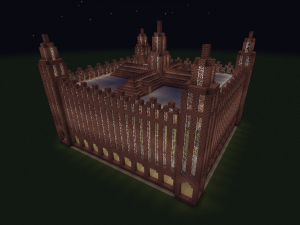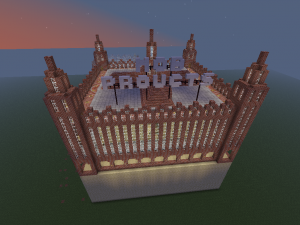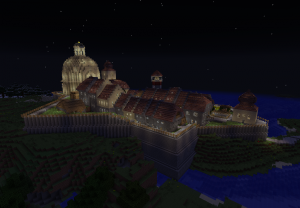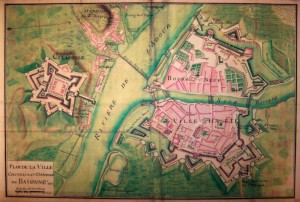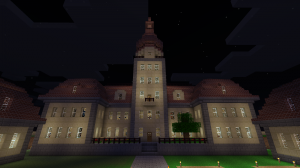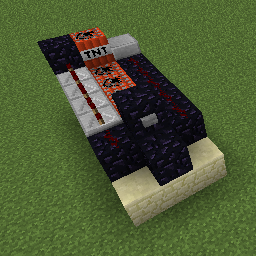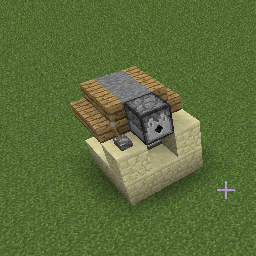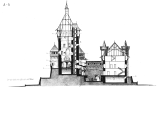When considering modern political debates, it always makes sense to go back, and consider where these laws come from. And with patents, it turns out, just about everything said today by critics of the patent system was already voiced more than 150 years ago.
I managed to find the archive for this piece here, OCR’d it and corrected it manually. the spelling and rather weird placement of semicolons and double quotes has been preserved from the original.
1851.] THE ECONOMIST. 811
AMENDMENT OF THE PATENT LAWS.
THE measure for amending the Patent Laws, which is about to be
discussed in the House of Commons, was very fully described by Lord
Granville when he moved the committee on the bill on the 1st inst. It
will abolish useless offices, and by requiring accurate specifications,
will prevent many frauds now practised ; it will give protection from
the date of application by a provisional registration, abolish the
system of caveats, and make all patented inventions easy of access
to the public. It will make one patent valid for the United Empire,
instead of requiring, as at present, one for England, one for Scotland,
and one for Ireland, and reduce the number of offices now concerned in
granting patents from eight to two — the Great Seal Patent Office, and an
office to be created of the nature of the Record (Attorney-General’s)
Office. The petition for a patent must be left at the Great Seal Office,
accompanied by a specification, in order to avoid the evil now very
common of schemers petitioning for a patent, and spending the six months
allowed for making the specification in appropriating some inventions to
themselves of which they have heard or got a glimpse. On depositing the
specification and paying 5£, the patentee will obtain complete protection
for six months, so that the merit of the invention may in that time be
tested. Good inventions will find a market, and less time and money than
at present will be wasted on worthless schemes. By abolishing caveats,
fraud will be avoided. At present schemers enter caveats when there is a
great probability that something useful is about to be brought forward ;
claim priority over the real inventor, and harass him or cheat him out
of his expected reward. Instead of inviting by such means an envious or
a designing man to oppose a modest and successful inventor, an invention
will be referred to scientific examiners, the title of the patent will
be advertised, and those who object to its being granted will have an
opportunity of stating their objections. Between them and the claimants,
the examiners will decide. To give a remedy against any injustice
committed by the examiners, an appeal will lie to the law officers of
the Crown.
Another improvement in the present law is to distribute the payment
for the patent, now required to be paid at once, over a period of
seven years. One payment of 20£ fees and 5£ stamps is to be made at the
commencement of the patent ; another of 40£ fees and 10£ stamps at the
end of the third year ; and at the end of the seventh year, 80£ fees
and 20£ stamps. If the invention should turn out useful, the larger
sums required at the second and third periods will be readily paid ;
and if it should not be useful, the failure to pay the second and third
instalments will void the patent, the pockets of individuals will not be
emptied to their disadvantage or ruin, and the accumulation of useless
patents will be prevented. By another clause in the bill, the publication
of an invention in a foreign country or in one of our colonies, to which
the patent laws are not extended, is considered as publication at home,
and to have a similar effect in preventing the grant of a patent. The
mere importation of an invention will not give a claim to monopolise
its advantages. Such are the leading features of the new measure,
which will be a great improvement on the existing law.
Only one of the many witnesses examined before the select committee
to which the bill was referred, advocated the present system, and he
is interested in its continuance. Some of them wished the measure to go
further but as far as it goes all the other witnesses approve of it. They
were chiefly persons connected with patents, and favourable to the
principle of the old and the new law. Before the committee no witnesses
were called, according to custom, on behalf of the public, though patents
are described as bargains between inventors and the public.
For a knowledge of their inventions, it consents to give them a monopoly
for a certain period. How its interests can be represented before such a
committee, who is at once wise enough to know the interests of the public,
and is sufficiently confided in to be its witness, we are not aware, and
the public interest was left, of course, to the care of the committee,
having, as the rule, no other evidence placed before it by such an
inquiry than that of partial and interested persons. In running over
what they said, nothing strikes us more forcibly than the many tricks
and frauds to which the patent system gives rise. Besides the caveats,
by which one man attempts wrongly to appropriate to himself the bounty
which the State gives for invention and which properly belongs to another,
the granting patents “inflames cupidity,” excites fraud, stimulates men
to run after schemes that may enable them to levy a tax on the public,
begets disputes and quarrels betwixt inventors, provokes endless lawsuits,
bestows rewards on the wrong persons, makes men ruin themselves for the
sake of getting the privileges of a patent. Patents are like lotteries,
in which there are a few prizes and a great many blanks. Comprehensive
patents are taken out by some parties, for the purpose of stopping
inventions, or appropriating the fruits of the inventions of others,
&c. Such Consequences, more resembling the smuggling and fraud caused
by an ill-advised tax than anything else, cause a strong suspicion. that
the principle of the law from which such consequences flow cannot be just.
We read, therefore, with great pleasure, Earl Granville’s manly
declaration, that ” he had gone into the committee
” with some doubt, and he was sorry to say, such was the
” obstinacy of his nature, that all the evidence in favour and
” against had sent him forth confirmed in the belief that it
” was inadvisable for the public, of no advantage for the inventor,
” and wrong in principle, to have any patents for inventions at all.”
That conclusion is not less remarkable than correct ; though we
are inclined to be somewhat sceptical as to the following
assertion by the Noble Earl, that “if the whole country were polled, the
great mass of the people would be in favour of the Patent Laws.” Such a
conclusion is naturally inspired by living for the moment in an atmosphere
of inventors and patent agents ; but believing, like the Noble Lord,
that the principle of such laws is erroneous, we have confidence in the
intelligence and reason of the community, and cannot so readily admit
that which. appears to us to be obviously wrong is generally approved
of. What the community requires is, that inventors be rewarded ; that
skilful men who contribute to the progress and improvement of society
shall he well paid for their exertions. The Patent Laws are supported
because it is erroneously supposed that they are means to this end. It
is only necessary to show, as Earl Granville and the inquiries of the
committee have shown, that they completely fail to answer this purpose,
to disabuse the community of the prejudice in their favour. To poll
the community on such a question, the arguments pro and con should be
placed before it, and from them it would ratify Earl Granville’s view,
and decide against all Patent Laws.
From Mr Ricardo’s evidence before the Lord’s committee, they would
learn, whatever attributes imagination may subsequently have given to
the grant of patents, that it was intended at its origin merely to
raise a revenue. To encourage inventors and promote invention were
after and secondary considerations, more like pretexts to justify a
wrong than the real grounds of the measure. That taxing inventions can
tend to promote them is not agreeable to the common understanding of the
influence of taxation. James the 1st raised 200,000£ a year by granting
patents. At present about five hundred patents are taken out every year;
the expense of each patent is about 350£, or a tax of about 175,000£
is annually levied on the grant of patents. To encourage invention it
is very heavily taxed. Only a few patents are very profitable, not more
probably than 1 per cent.; and by the Patent Laws inventors are annually
mulcted, independently of the sums they are obliged. to disburse for
specifications, &c., &c., of upwards of 170,000£. The State in return
for this confers on inventors nothing but what they. actually before
posseseed — the right to use their invention., and recover by its use
from the bulk of the community, if they can, the cost of their invention,
and the money the State has taken from them. All that the State does and
can do, is to promise that no, other person than the inventor shall put
his invention into use; but the State. as we know from experience, cannot
fulfil its promise, and cannot with its utmost power ensure an inventor
a return of one sixpence for his disbursements. The power to recover
them from the rest of the community depends entirely on the utility of
the invention, which exists wholly irrespective of any guarantee from
the State. It is, therefore, one of the delusions greediness fostered
by the Patent Laws, to suppose that the State can ensure an inventor,
by a patent, a certain reward for his invention.
From the evidence of other gentlemen the public will learn that patents
are artificial stimuli to improvident exertions ; that they cheat people by
promising what they cannot perform ; that they rarely give security to
really good inventions, and elevate into importance a number of trifles ;
that they much more impede than promote invention ; that most great
modern improvements, such as mule-spinning, lighting streets with gas,
travelling by railroads, and adapting steam to ocean navigation, like
the inventions of arithmetic and
printing in ancient times, were introduced independently of the influence
of patents ; and that patents impoverish, not enrich inventors. In fact,
the whole of the evidence lands us in this conclusion, that patents
are, as Mr Brunel states, productive of
” unmixed evil to every party connected with them, those for the benefit
of whom they are given and the public.” The advocates of the patent
system — the societies which are getting up all the agitation on the
subject, admit this — they complain of it. The only difference between
them and Mr Brunel, Lord Granville, Mr Lloyd, and others is, that they
attribute all the evils, which they acknowledge, to our peculiar Patent
Laws, and they suppose that by some improvement in the law these evils
would be avoided.; while the other gentlemen justly suppose that the evils
are inherent in the system itself, and cannot be got rid of by any change
in the terms and form of the law. That the Patent Laws, as they exist,
cause immense mischief to inventors and the public — that they are prolific
of expense, litigation, and fraud, all are agreed; and it is quite proper
therefore to amend the laws, that further experience of an improved law
may demonstrate to the most sceptical the real source of the evil. That
kind of practical conclusion will alone satisfy the inventors and
public. With Lord Granville, therefore, we think that the improved law,
such as the inventors and the societies and the public demand, or is
supposed to demand, should be passed ; at the same time we agree with
the Noble Lord, and the very respectable authorities he referred to,
that the principle of the law is erroneous, that the system of patents
is altogether wrong, and that no possible good can ever come of a Patent
Law, however admirably it may be framed.
The principle of such a law is to bestow on. one individual the exclusive
use of some particular instrument or object which he claims to have
discovered or invented. As long as he uses the invention himself or
for his own gratification, no interference is required ; it is only
asked for to prevent some other persons from using his invention. An
essential part of such a law, therefore — its main principle — is to
impose restraints and restrictions on all others than the inventor. On
him it confers nothing positive, it only imposes restrictions on others
for his presumed advantage. To them it does a certain injury ; on him it
confers only a contingent and doubtful benefit ; and before any such law
ought to be passed, a rigid inquiry is necessary in every individual case,
whether the probable benefit to the individual will outweigh the certain
injury to society. When patents are granted for the purpose of raising a
revenue the case is different. But when they are granted for the advantage
of individuals, such an inquiry is absolutely necessary. Accordingly,
under the old law a reference was made to the law officers of the Crown
for this purpose. Caveats were allowed and a host Of regulations were
adopted to ensure the preliminary examination. Under the new law the
duty is to be performed by a board of examiners.
A preliminary inquiry of this kind is adopted in the United States,
in Prussia, and in Austria ; but in France, where the grant of patents
is regarded only as a matter of revenue, any man may have a patent for
any thing he chooses, on paying a certain stipulated sum, leaving the
question of the validity of his claim to the invention to be settled
by a contest with his fellow-citizens before the ordinary tribunals,
should any one question his patent. In England, too, the inquiry has
been, in practice, limited to ascertain whether the new patent claimed
infringed on some previous patent. But the right of patentees are only
thought of as part of the rights of the general public, and it is against
the whole public that the privileges of every individual patentee are
guaranteed, as well as against other patentees. The principle involved
in the inquiry is the propriety of granting the claims of the inventor to
the exclusive use of his invention as against the whole society. Before
granting his claims an inquiry into them is indispensable, and the new
law, in order to secure a full inquiry, appoints a tribunal of appeal,
should the examiners not satisfy the claimants.
This circumstance shows that what is called the right of property
in inventions — the right, namely of an inventor to exclude every other
person from using his invention after it has been made known — is different
from most other rights of property. It resembles, certainly, some other
exclusive uses created by Government, but they constitute only a small
part of the property of all the individuals of a nation; are, in all
cases, more privileges than rights; and even in them it is sufficient to
establish the right that the individual is in possession. No previous
inquiry is necessary to confer it on him, and inquiry only becomes
necessary if an adverse claim be made.
It is the very nature of knowledge and skill, totally distinct from most
kinds of property, to be improved and extended by being imparted. To
limit the exclusive use of knowledge and skill to one person, as is done
in degree by the Patent Laws, is, in fact, to take measures to stop their
growth. Before the privilege to use exclusively any particular species of
knowledge and skill, which by mere inspection can be acquired by others,
be conferred by a law on any individual, a strong case must be made
out that the exclusive use is more for the advantage of society than a
free participation in it for all. If a right to such exclusive use were
a natural right of property, like the right of the savage to own the
game he has run down and begun to cook, no considerations of fancied
expediency would lead us to oppose it. But it is no such
right, and those who clamour for the exclusive use, and those who bestow
it, are the persons who fancy an expediency that experience proves not
to exist. Far from there existing in any individual a natural right,
or even power to confine to himself exclusively any knowledge or
skill, by using which he may convey that knowledge to other persons,
or enable them to acquire the skill; there exists, on the contrary,
a natural right in every individual to use any knowledge or skill he
acquires from beholding it in others ; and there is, moreover, a strong
desire implanted in most men for the wisest of purposes, as a means of
promoting the general improvement, to imitate and use any knowledge or
skill they acquire by inspection or observation. We deny, therefore,
that the claims made by inventors to the exclusive use of inventions
is a right of property ; and we deny, on the broad general principle,
that the utmost diffusion of knowledge is advantageous to society,
that it can ever be expedient to bestow patents on individuals for the
exclusive use of inventions.
The only doubt that can arise springs from the supposition, that an
individual may discover something of such pre-eminent importance
that society will be injured if he be not encouraged by a Patent Law
to make his discovery known — to inform the public of his secret, and
receive in return, as one of the witnesses expressed it, protection
from robbery. Such a statement reminds us of the “Long Range” of Captain
Warner ; but the conclusion to be deduced from that case, and probably
all similar cases is, that it was of no real importance, and that society
would not be in the least injured though all such secrets died with their
possessors. It is more conclusive, because more general against all such
suppositions, that nearly all useful inventions depend less on any
individual than on the progress of society. A want is felt, as stated
by one of the witnesses ; ingenuity is directed to supply it ; and the
consequence is, that a great number of suggestions or inventions of a
similar kind come to light. ” The ideas of men,” said Mr Ricardo, ” are
set in motion by exactly the same circumstances.” So we find continually
a great number of similar patents taken out about the same time. Thus the
want suggests the invention, and though the State should not reward him
who might be lucky enough to be the first to hit on the thing required,
the want growing from society, and not from. the individual or from the
Government, would most certainly produce the required means of gratifying
it. The notion, therefore, that any individual discovers secrets which
it would be very advantageous for society to know ; that if he were
not artificially rewarded for discovering them that they would never be
known — that society would for ever want his peculiar kind of knowledge ;
and that, because it does not reward the possessors of such secrets,
it will lose a great number of such valuable pieces of knowledge, are all
delusions. The progress of knowledge, and the progress of invention and
discovery, like the progress of population and the progress of society,
have their ordained and settled course, which cannot be hastened,
though perhaps it may be retarded, by Patent Laws.
We say thus much in support of the very enlightened views which Earl
Granville has taken on this question, and which are shared by the Lord
Chief Justice of England, the Chief Justice of the Common Pleas, the
Master of the Rolls, Mr Ricardo, Mr Brunel, Mr Cubitt, Mr Lloyd, and a
number of gentlemen of the highest eminence, who have taken the trouble to
study the subject. We have already discussed it at considerable length
on Dec. 21, 1850 and Feb. 1, and we can only be gratified at finding our
conclusions against the presumed rights of inventors supported by such
very high authority.
The copyright-status of this is of course public domain.


